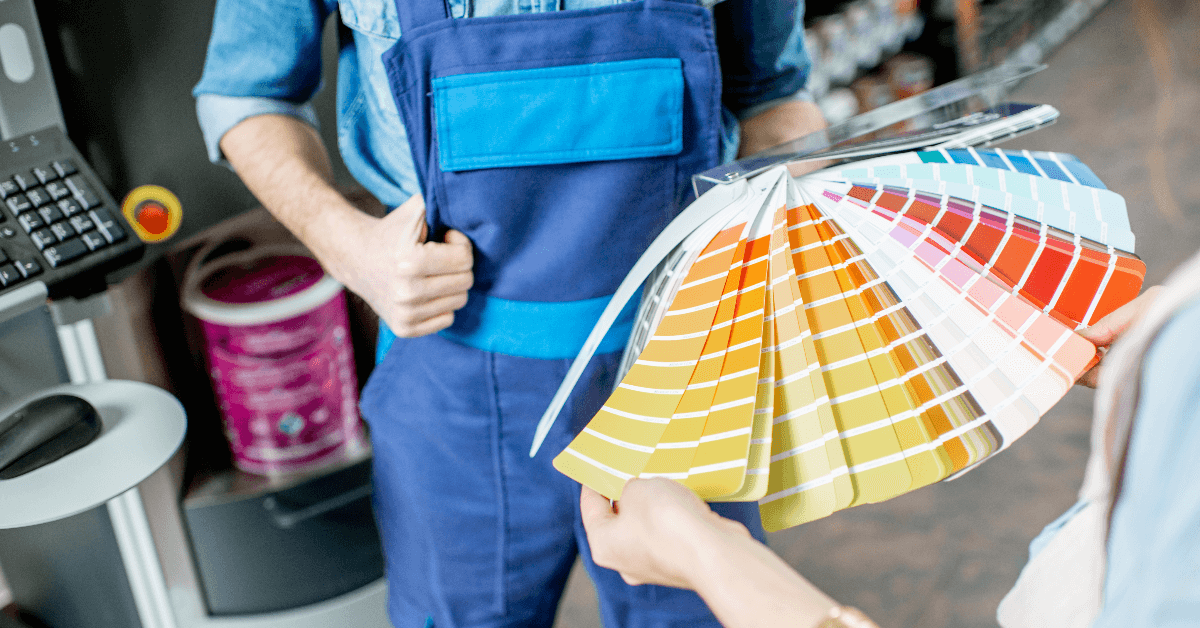Painting is as much an art as it is a science. While colors and patterns cater to aesthetics, understanding the paint chemistry behind each brush stroke ensures durability, quality, and the desired finish. The world of paint types and paint finishes can seem labyrinthine, but fret not! By the end of this expert dive, you’ll navigate your next painting project with expertise.
Diving Deep into Paint Types
The choice of paint types often influences the durability, drying time, and even the vibrancy of the chosen color. Let’s demystify the most common ones.
- Latex (Water-Based) Paint
Arguably the most popular for interior paint jobs, latex paint is water-based and boasts a quick drying time. Its key benefits include:
-
- Low Odor: Ideal for indoor spaces where ventilation might be limited.
- Easy Cleanup: Spills and brushes can be cleaned with soap and water.
- Durability: Resists yellowing and aging over time.
- Oil-Based Paint
Durable and resilient, oil-based paints offer a smooth, glossy finish and are predominantly used for high-moisture areas.
- Long Drying Time: Allows for a smoother finish, as brush strokes have time to even out.
- Rich Finish: Provides a depth of color that’s hard to match.
- Stain Resistance: Particularly useful for kitchens or rooms frequented by kids.
The Finish Spectrum: Exploring Paint Finishes
With the right paint type selected, it’s now crucial to pair it with the appropriate finish. The finish dictates not just the look but also the maintenance ease.
- Matte Finish
Elegant and understated, the matte finish is devoid of shine, making it an excellent choice for walls with imperfections.
- Low Reflectivity: Offers a velvety texture, great for hiding minor wall blemishes.
- High Pigment Levels: Provides excellent color depth but might need more than one coat.
- Maintenance: Due to its porous nature, it can be challenging to clean.
- Satin Finish
Striking a balance between matte and gloss, satin offers a soft sheen, ideal for spaces that need easy cleaning without high reflectivity.
- Soft Glow: Offers a warm aesthetic to rooms.
- Easy to Clean: Suitable for kids’ rooms or high-traffic areas.
- Versatility: Can be used for walls, trims, and doors.
- Gloss and Semi-Gloss Finish
Reflective and radiant gloss finishes are perfect for spaces that need a bright uplift.
- High Reflectivity: Bounces light, making spaces appear larger.
- Durability: Resists moisture, making it ideal for bathrooms and kitchens.
- Visibility: Any wall imperfections might be pronounced due to the shine.
Behind the Scenes: The Paint Chemistry
Delving deeper into the world of paint chemistry, it’s evident that paint isn’t just about color. It’s a concoction of solvents, pigments, resins, and additives. Each ingredient serves a purpose:
- Pigments: Provide the color. They’re solid particles that scatter light to give paint its hue.
- Resins: Bind the pigments together. In oil-based paints, these are typically linseed oil, whereas, in latex paints, they’re acrylic or vinyl-based.
- Solvents: Keep the paint in liquid form until applied. Water is the solvent for latex paints, while mineral spirits are for oil-based ones.
- Additives: Enhance specific properties like drying time, consistency, and mold resistance.
Wrapping Up: Making Informed Choices
With a robust understanding of paint types and paint finishes, you’re well-equipped to make choices tailored to your space’s needs. Remember, while aesthetic appeal is paramount, understanding the underlying paint chemistry ensures your beautiful walls stand the test of time.
So, the next time you embark on a painting spree, remember it’s not just about the color—it’s about science, durability, expertise, and art all rolled into one. Happy painting!

